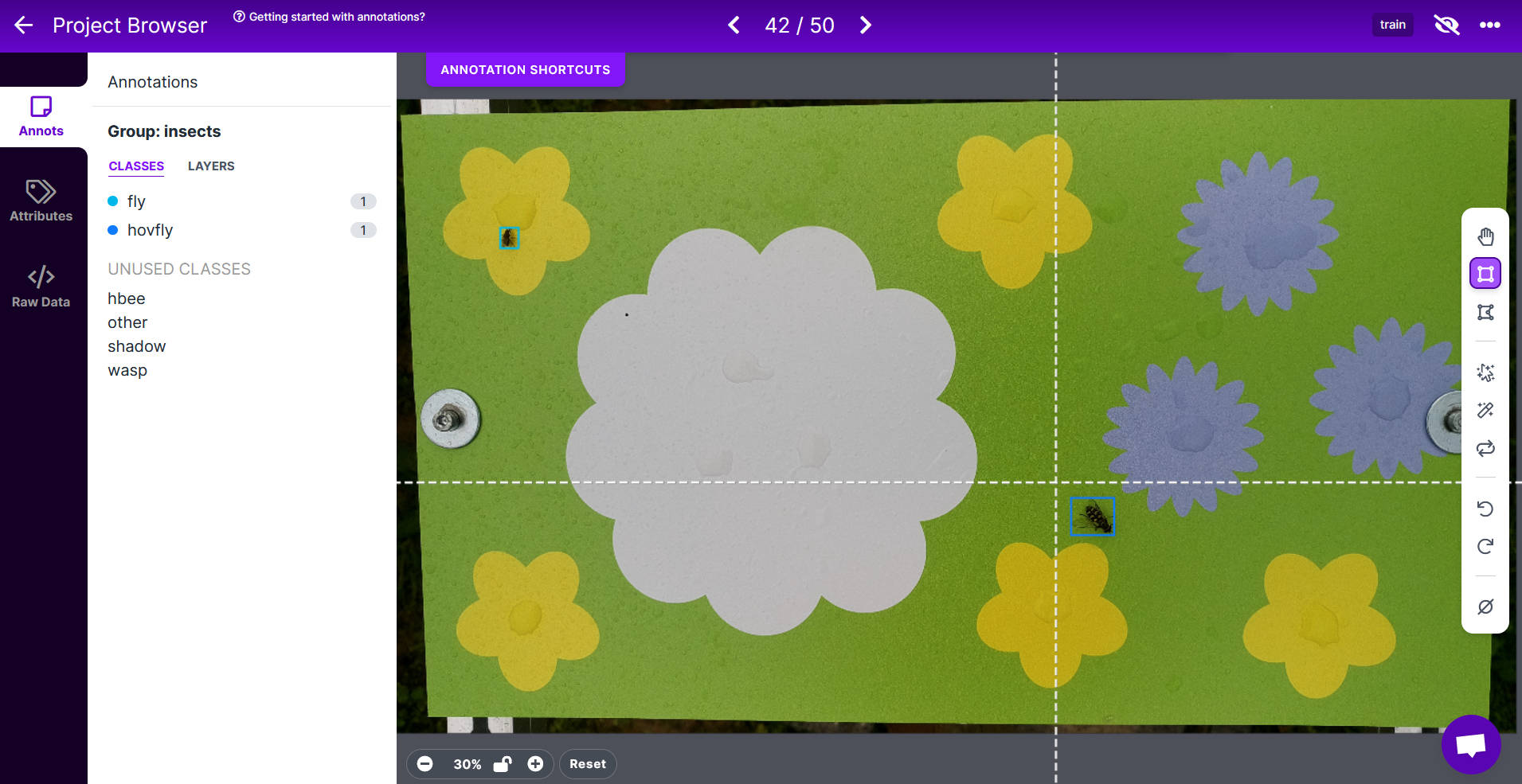This repository contains the Markdown source files and assets (images, screenshots) of the Insect Detect Docs 📑 website, based on Material for MkDocs.
The PDF_templates folder contains
drilling templates
that can be used while building
the DIY camera trap and templates for the small and big
flower platform
that is used as visual attractant and background for the automated insect monitoring.
The Insect Detect DIY camera trap system is composed of low-cost off-the-shelf hardware components (Raspberry Pi Zero 2 W, Luxonis OAK-1, PiJuice Zero pHAT), combined with open source software and can be easily assembled and set up with the provided instructions.
In the Hardware section of the documentaton website, you will find a list with all required components and detailed step-by-step instructions on how to build and assemble the DIY camera trap system. Only some standard tools are necessary, which are listed in the Hardware overview.
In the Software
section of the documentaton website, all steps to get the camera trap up and
running are explained. You will start with installing the necessary software
to your local PC,
to communicate with the Raspberry Pi Zero 2 W. The next steps will guide you
through the Raspberry Pi configuration,
after which everything is ready to use the Python scripts from the
insect-detect GitHub repo
for testing and deploying the camera trap. Details on various options to
adapt the scripts to different use cases can be found in the
Programming
part of the Software section.
The Model Training section will show you tools to annotate your own images and use these to train your custom YOLOv5, YOLOv6, YOLOv7 or YOLOv8 object detection model that can be deployed on the OAK-1 camera.
To classify the cropped insect images, you can train a custom YOLOv5-cls
image classification model
in the next step that can be run on your local PC (no GPU necessary). All of the
model training can be done in Google Colab,
where you will have access to a free cloud GPU for fast training without special
hardware requirements. The model training notebooks are available in the
insect-detect-ml GitHub repo.
The Deployment section will give you details on each step of the processing pipeline,
from on-device detection and
tracking, to classification
of the cropped insect images on your local PC and subsequent metadata
post-processing of the combined results.
The Python script for classification
of the captured insect images is available in the custom yolov5 fork.
A Python script for metadata post-processing
is available in the insect-detect-ml GitHub repo.
This repository is licensed under the terms of the Creative Commons Attribution-ShareAlike 4.0 International License (CC BY-SA 4.0).
If you use resources from this repository, please cite our paper:
Sittinger M, Uhler J, Pink M, Herz A (2024) Insect detect: An open-source DIY camera trap for automated insect monitoring. PLoS ONE 19(4): e0295474. https://doi.org/10.1371/journal.pone.0295474







